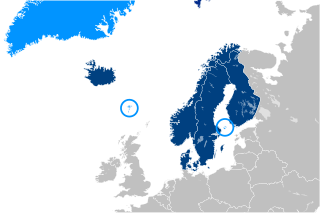
A pension is a fund into which amounts are paid regularly during the individual's working career, and from which periodic payments are made to support the person's retirement from work. A pension may be:

In the United States, Social Security is the commonly used term for the federal Old-Age, Survivors, and Disability Insurance (OASDI) program and is administered by the Social Security Administration (SSA). The Social Security Act was passed in 1935, and the existing version of the Act, as amended, encompasses several social welfare and social insurance programs.

Welfare, or commonly social welfare, is a type of government support intended to ensure that members of a society can meet basic human needs such as food and shelter. Social security may either be synonymous with welfare, or refer specifically to social insurance programs which provide support only to those who have previously contributed, as opposed to social assistance programs which provide support on the basis of need alone. The International Labour Organization defines social security as covering support for those in old age, support for the maintenance of children, medical treatment, parental and sick leave, unemployment and disability benefits, and support for sufferers of occupational injury.

National Insurance (NI) is a fundamental component of the welfare state in the United Kingdom. It acts as a form of social security, since payment of NI contributions establishes entitlement to certain state benefits for workers and their families.

In macroeconomics and finance, a transfer payment is a redistribution of income and wealth by means of the government making a payment, without goods or services being received in return. These payments are considered to be non-exhaustive because they do not directly absorb resources or create output. Examples of transfer payments include welfare, financial aid, social security, and government subsidies for certain businesses.
A disability pension is a form of pension given to those people who are permanently or temporarily unable to work due to a disability.

The U.S. Railroad Retirement Board (RRB) is an independent agency in the executive branch of the United States government created in 1935 to administer a social insurance program providing retirement benefits to the country's railroad workers.
Social security in India includes a variety of statutory insurances and social grant schemes bundled into a formerly complex and fragmented system run by the Indian government at the federal and the state level. The Directive Principles of State Policy, enshrined in Part IV of the Indian Constitution reflects that India is a welfare state. Food security to all Indians are guaranteed under the National Food Security Act, 2013 where the government provides highly subsidised food grains or a food security allowance to economically vulnerable people. The system has since been universalised with the passing of The Code on Social Security, 2020. These cover most of the Indian population with social protection in various situations in their lives.
Social security is divided by the French government into five branches: illness; old age/retirement; family; work accident; and occupational disease. From an institutional point of view, French social security is made up of diverse organismes. The system is divided into three main Regimes: the General Regime, the Farm Regime, and the Self-employed Regime. In addition there are numerous special regimes dating from prior to the creation of the state system in the mid-to-late 1940s.

The Mexican Institute for Social Security and Services for State Workers or Civil Service Social Security and Services Institute is a federal government organization in Mexico that administers part of Mexico's health care and social security systems, and provides assistance in cases of disability, old age, early retirement, and death to federal workers. Unlike the Mexican Social Security Institute, which covers workers in the private sector, the ISSSTE is charged with providing benefits for federal government workers only. Together with the IMSS, the ISSSTE provides health coverage for between 55 and 60 percent of the population of Mexico.
Welfare in France includes all systems whose purpose is to protect people against the financial consequences of social risks.
Disability benefits are funds provided from public or private sources to a person who is ill or who has a disability.

Social security or welfare in Finland is very comprehensive compared to what almost all other countries provide. In the late 1980s, Finland had one of the world's most advanced welfare systems, which guaranteed decent living conditions to all Finns. Created almost entirely during the first three decades after World War II, the social security system was an outgrowth of the traditional Nordic belief that the state is not inherently hostile to the well-being of its citizens and can intervene benevolently on their behalf. According to some social historians, the basis of this belief was a relatively benign history that had allowed the gradual emergence of a free and independent peasantry in the Nordic countries and had curtailed the dominance of the nobility and the subsequent formation of a powerful right wing. Finland's history was harsher than the histories of the other Nordic countries but didn't prevent the country from following their path of social development.
Pensions in Spain consist of a mandatory state pension scheme, and voluntary company and individual pension provision.

The National Social Security Administration is a decentralized Argentine Government social insurance agency managed under the aegis of the Ministry of Health and Social Development. The agency is the principal administrator of social security and other social benefits in Argentina, including family and childhood subsidies, and unemployment insurance.

The Ecuadorian Social Security Institute, is an autonomous entity that is part of the social security system of Ecuador and is responsible for implementing the mandatory universal insurance, according to the Constitution of the Republic, in force since 2008.
Welfare in Peru began on a base of democratic views. Its political system is a multi-party system that includes having a President and Prime Minister. The economy of Peru has expanded substantially throughout the years making it one of the fastest growing economies. As described by Gøsta Esping-Andersen, in his book The Three Worlds of Welfare Capitalism, the Peruvian welfare system would most commonly fit in with the liberal model, since Peru mostly attempts to emancipate the less fortunate from poverty, through means of state-cultivated programs. In accordance, the welfare system has shown great expansion, with the focus primarily on education, healthcare, and the creation of a social safety net.
The Nicaraguan Social Security Institute oversees the Nicaraguan social security system. It was legally established in 1956 and first implemented in 1957.

The National Institute for Social Security is the main entity of the Italian public retirement system. All waged labourers and most of self-employed, without a proper autonomous social security fund, must be subscribed to INPS. The entity is under the supervision of the Ministry of Labour and Social Policies.










